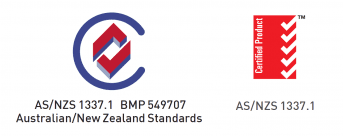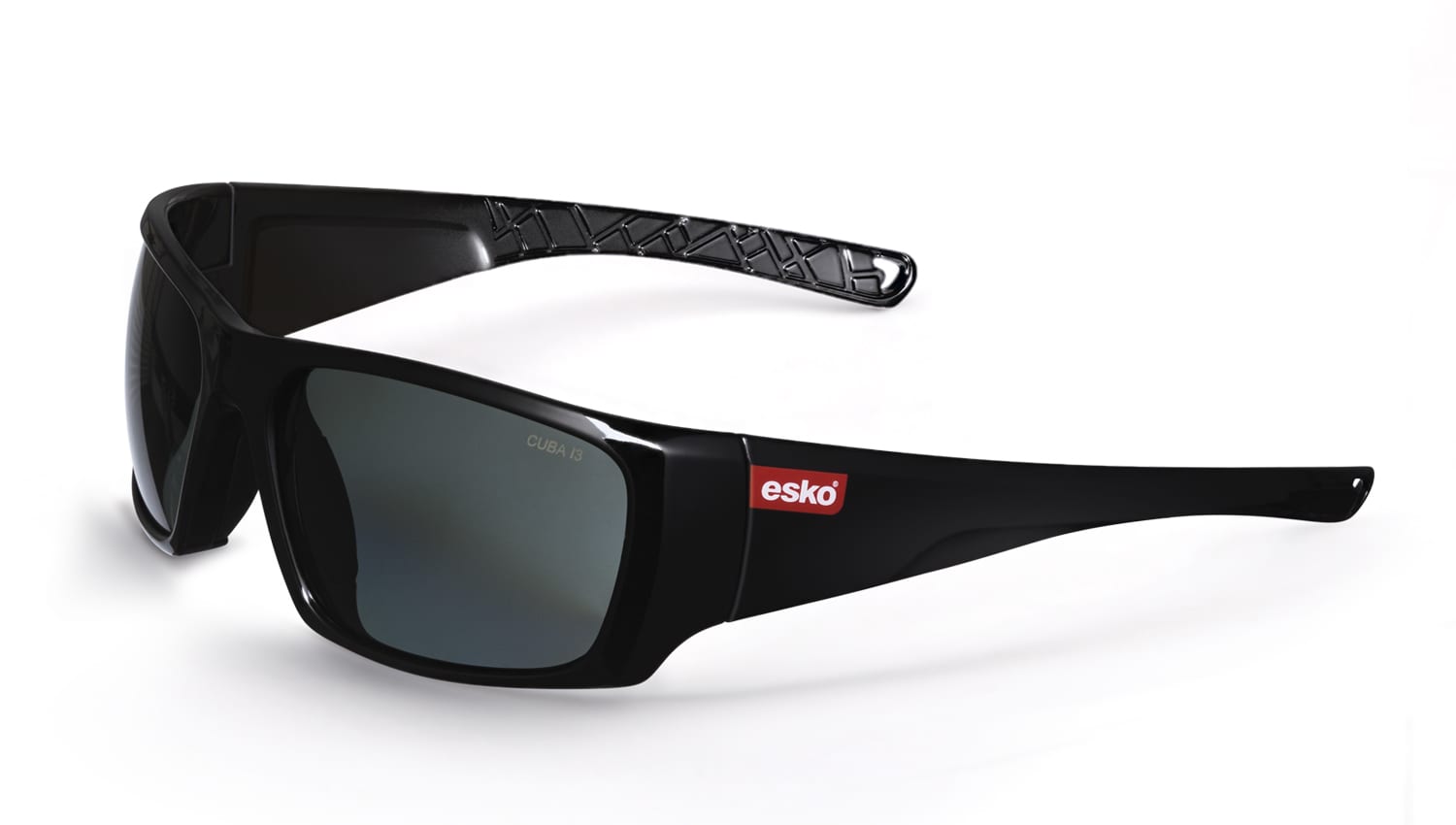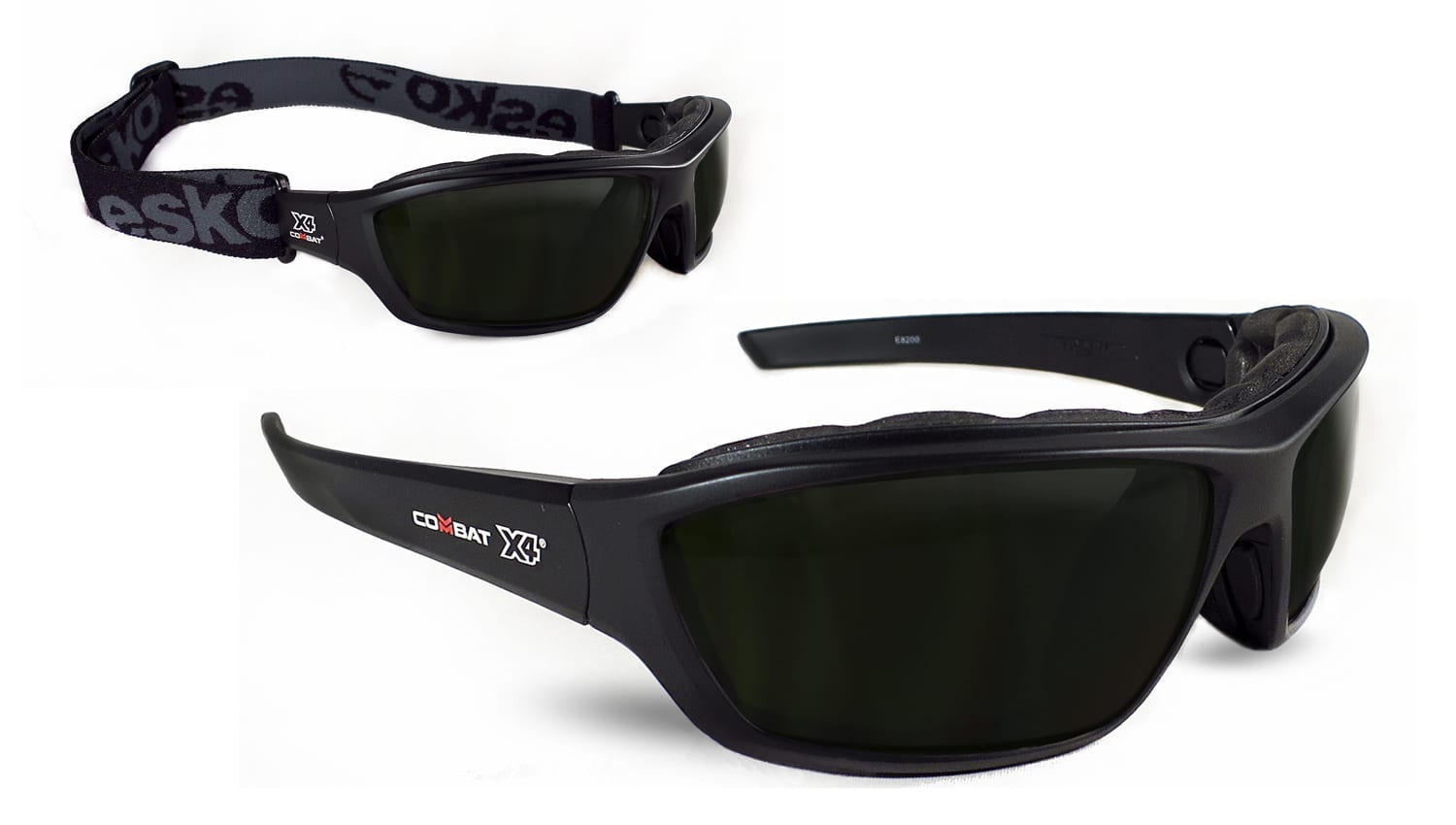How important is safety eyewear?
Any work activity involving airborne particles or objects, hazardous substances, or optical radiation (eg from welding or solar radiation) can put a person’s eyes at risk. Even eye injuries that seem minor can cause permanent damage, including blindness.
What should I be looking for?
This Standard sets out the specific requirements for eyewear to protect the user from impact, UV and other hazards in the workplace. Look for these symbols which indicate the product has been passed by an approved testing agency:


| eye and face protector type | low impact 13 m/s | medium impact 45 m/s | high impact 120m/s | extra high impact 190 m/s |
|---|---|---|---|---|
| wide vision spectacle | x | x | ||
| goggle | x | x | ||
| eye shield | x | x | ||
| face shield | x | x | x | x |

| Marking | Hazard | Application for |
|---|---|---|
| C or 3 | splash proof | goggles, eye shields and face shields |
| D or 4 | dust proof | goggles |
| G or 5 | gas tight | goggles |
| M or 9 | molten metal and hot solids | face shields only |

UV Protection
In New Zealand conditions, eye protection against ultraviolet (UV) radiation from the sun is particularly important.
UV radiation can lead to eye complaints ranging from mild irritation to macular degeneration, cataracts and cancer. All safety glasses from ESKO prevent at least 99% of harmful UV rays from reaching the eye and the Magnum and Destination ranges block 100%.
Protect your eyes by wearing a hat—a hat with a wide brim can reduce UV radiation reaching the eyes by around 50%—and wearing UV protective glasses.
Be aware that UV radiation can pass round the edge of glasses, so choose eyewear that is close-fitting, and wrap around your face.
Tinted lenses do not necessarily block more UV light, check the product information for the degree of resistance to UV light.
The amount of outdoor UV exposure will be influenced by where you are working. UV radiation from the sun is also reflected off the ground surface. Bare ground will reflect about 15% of UV radiation, the sea about 25% and snow about 80%.
How to select the most appropriate eyewear
With proper safety eyewear most injuries are preventable. But to be effective the eyewear must be appropriate for the hazard. Use this guide to narrow down the best eyewear for your particular requirement:
1.) LENS COLOUR

Clear Lens
Clear lenses protect against general indoor/outdoor hazards and UV rays

Smoke Lens
Smoke lenses are good for sunlight and outdoors glare conditions.

Amber Lens
Amber lenses enhance contrast—ideal for low-light environments.

Polarised Lens
Polarised lenses cut out horizontal reflections from water, snow or flat road surfaces, greatly reducing distracting glare.
Mirror Coating
Mirror coatings give excellent filtering in strong sunlight and outdoors glare conditions

Shade-5 Lens
Shade-5 lenses are ideal for working in proximity to welding or in very brightly lit conditions.
2.) IMPACT RESISTANCE
Eyes exposed to impact danger from flying particles, sparks, shavings, shards?
Low Impact Rated:
Spectacles that can withstand impact from an object moving at 12 metres per second.
Suitable for manual chipping, riveting, hammering, handling wire, brick cutting.
Medium Impact Rated:
Spectacles, eye shields or lightweight visor systems that can withstand impact from an object moving up to 45 metres per second.
Suitable for tasks like machine disc cutting, scaling, grinding, and machining metals, certain wood working operations, stone dressing, horticulture and gardening including lawn mowing and using weed eaters/ line trimmers
High Impact Rated:
Can withstand impact from an object moving up to 120 metres per second.
Suitable for tasks like using explosive power tools, high speed disc grinding, metal cutting.
Extra High Impact Rated:
Can withstand impact from an object moving up to 190 metres per second.
Suitable for tasks like shot blasting, ballistics, military, electrical maintenance.
3.) UV RATING
Exposed to UV light in outdoors glare or laboratory radiation?
Choose UV-blocking lenses.
4.) FOAM SEAL
Working in dusty environments?
Select glasses with a foam gasket that seals comfortably against the face—or, in high risk environments, goggles.
5.)GOGGLE

Do you need protection against hazardous splashes, flying particles, extremely dusty environments?
For the highest level of protection choose goggles.

